Streamlining student learning outcome assessment through ePortfolios in Dietetics Program
The poster will describe the process that the dietetics program faculty and staff underwent to develop a systematic …

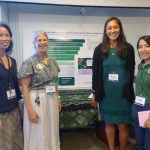
The poster will describe the process that the dietetics program faculty and staff underwent to develop a systematic …

The Department of Linguistics Comprehensive Exam consists of two Qualifying Papers. In recent years the QPs have fallen …

In 2018, the Communication program in the School of Communications conducted a program assessment of undergraduate senior capstone …
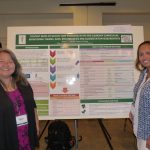
The poster describes the content mapping process that aligned the learning priorities in the problem-based-learning pre-clerkship medical curriculum …
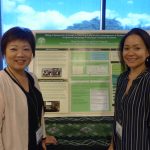
This poster describes a systematic process of developing the assessment of student professionalism in Speech-Language Pathology. The process …

We demonstrate how faculty use efficient and effective assessment of learning to improve the written and oral communication …
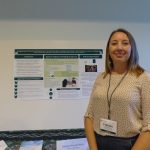
This project was to increase the learning and the assessment capabilities in two core Child and Family courses. By …

This poster describes the effort of the Ph.D. Committee in Social Welfare in investigating and improving students’ performance …
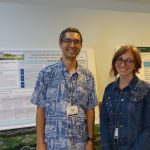
Less than 75% of Biological Engineering students have been assessed as meeting student learning outcome targets in the …
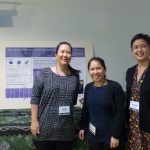
Children in Hawaii experience the worst oral health outcomes nationally. Seven out of 10 third graders experience tooth …
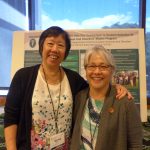
The poster describes the steps and resulting standardized student admission procedure for the Communication Sciences and Disorders’ Master …
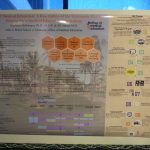
A process to conduct an overhaul of the JABSOM curriculum map of the medical education program was conducted, …
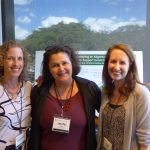
Faculty have difficulty in clarifying how their assessments and instructional strategies are aligned with both course and General …
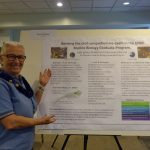
The Marine Biology Graduate Program has established an ad-hoc committee to review existing protocols of the comprehensive exam …
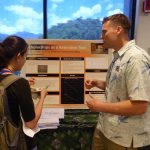
This study employed propensity score matching and regression analysis to determine whether or not a retention scholarship pilot …
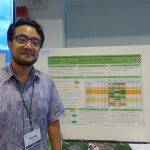
The Undergraduate Research Opportunities Program (UROP) utilized historic program data to identify potential gaps in campus awareness of …
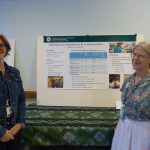
For the BS in Animal Sciences supervisor evaluations from the capstone field experience provide a valuable external check …
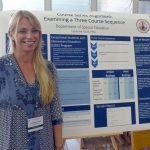
This poster outlines the process through which faculty examined how the embedded assignments, field components, and signature assignment …
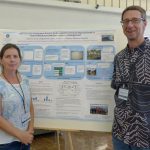
In this poster, assessment activities in Natural Resources and Environmental management (NREM) were designed to address three critical …
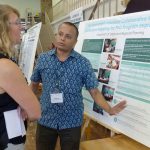
Faculty and doctoral students of the Department of Urban and Regional Planning (DURP) initiated a review of their …
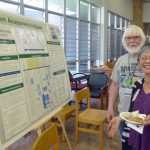
Department of Mathematics Program Assessment via Exam by Heiner Dovermann
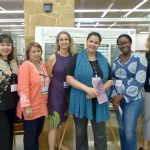
This poster presents undergraduate assessment results for critical thinking, information literacy, quantitative reasoning, and written communication based on …
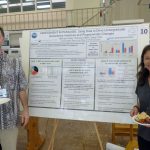
At the University of Hawaii at Manoa (UHM), the undergraduate geoscience programs are housed within the School of …
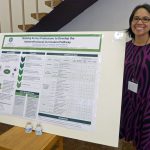
This poster presents the assessment of curriculum through the Interprofessional Education committee, which was created in 2015 with …
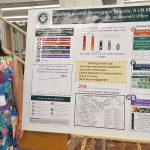
This poster presents examples of academic programs in higher education using learning assessment results for program improvement. The …

Exploring possibilities for, and effects of, Integrated Performance Assessments (IPAs) in the Department of East Asian Languages and …
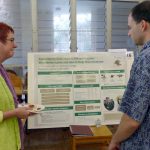
This poster shares results of a survey conducted in Summer 2016 to individuals eligible to participate in the …
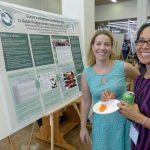
The Master of Science in Communication Sciences and Disorders (CSD) is nationally accredited and trains future speech language …
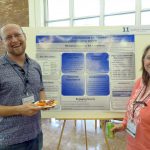
This poster describes strategies to build faculty capacity in curriculum design and alignment and ways to plant the …
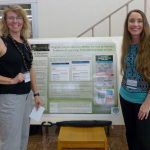
The development and implementation of surveys to assess learning within the College of Education (COE) for students in …

The undergraduate programs from two departments, Tropical Plant and Soil Sciences (TPSS) and Plant and Environmental Protection Sciences …

This poster describes the program student learning outcomes development process in the Dental Hygiene BS degree program. It …

Given the complex nature of the requirements for the 6 degree programs offered by the department of East …

The UH Manoa Anthropology Program, established in 1934, is the leading department of anthropology in Hawai’i, the Pacific, …
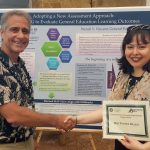
In Spring 2016, the General Education Office identified a need to improve its indirect assessment efforts. Working with …
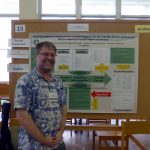
It is often hard to gauge the performance of a graduate student in a timely manner, or provide …

Animation is one of the three degree tracks in ACM Department. It has 2 full-time faculty positions and …

The Intercollege Nutrition PhD Program has seven student learning objectives (SLO). One SLO is to foster grant writing …
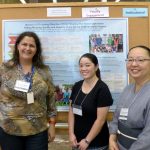
The purpose of this poster is to describe for faculty, staff and students what the ILOs are, why …
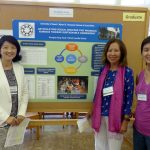
The Myron B. Thompson School of Social Work (SW) PhD program at the University of Hawaiʻi at Mānoa …
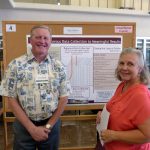
Our accrediting body, the AACSB, when considering our assessment program, has praised our data collection and has provided …

Poster will outline new learning objectives for the Geography department as a result of a faculty discussion of …
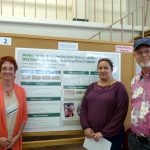
The Come Back to Mānoa program, established in Summer 2014 by the University of Hawaiʻi at Mānoa and …
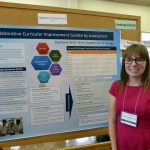
The Department of Biology at the University of Hawaiʻi at Mānoa began collaborative program assessment in the fall …
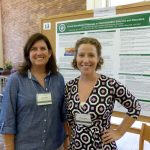
The University of Hawaiʻi at Mānoa (UHM) Department of Communication Sciences and Disorders (CSD) offers a two-year clinical …
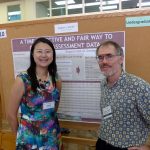
Assessment efforts at the University of Hawaiʻi at Mānoa strive to help departments meet learning objectives the departments …
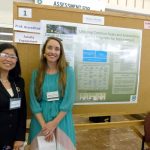
The College of Education (COE) at the University of Hawaiʻi at Mānoa was facing a challenge of developing …

The Department of Nursing is conducting a needs assessment to answer the following questions: 1) How are assessments …

Undergraduate programs in the College of Tropical Agriculture and Human Resources (CTAHR) are typically managed solely within a …
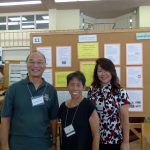
The Elementary Education Program (EEP) has about 30 instructional faculty and field supervisors who serve about 200 elementary …
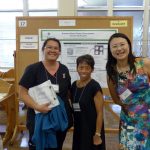
This poster features the development and use of a rubric for program assessment. The Nursing PhD program at …
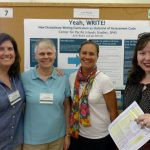
Pacific Island Studies at the University of Hawaiʻi at Mānoa has 6 teaching faculty and 20 majors enrolled …

The Ocean and Resources Engineering (ORE) Department at the University of Hawaiʻi at Mānoa (UHM) is a small, …

The Communication Department’s mission is to meet the challenges and opportunities of communication in the emerging technological, multicultural, …
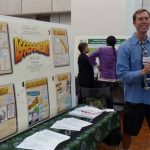
Observing that many faculty within the Theater Department at the University of Hawaiʻi at Mānoa lacked a strong …
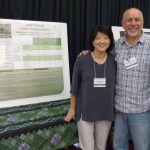
The School of Social work at the University of Hawaiʻi at Mānoa consists of three programs – BSW, …
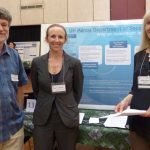
The Sociology Department at the University of Hawaiʻi at Mānoa (UHM) made significant changes to program assessment during …

At the University of Hawaiʻi at Mānoa, the Department of Biology is comprised of over one thousand undergraduate …
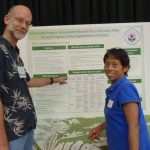
In fall 2014 and spring 2015 the Botany faculty at the University of Hawaiʻi at Mānoa devised programmatic …
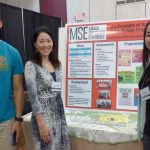
The University of Hawaiʻi at Mānoa’s highest attrition rate occurs between students’ first and second years. This issue …
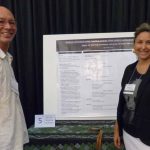
The online teaching award began at Manoa during the 2013-2014 academic year. This poster will present the positive …

Engaging in Self-Reflection: Using Assessment to Inform Retention Academic Advising Practices In Fall 2012, the College of Education …
This poster will have a strong descriptive element of the process undertaken to assess the doctoral program in …
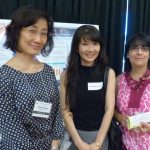
The Chinese Section at the East Asian Languages and Literatures (EALL) department at University of Hawaiʻi at Mānoa …
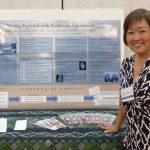
The Hawai‘i Rehabilitation Counseling program (HRC) at the University of Hawaiʻi at Mānoa (UHM) prepares graduate students to …
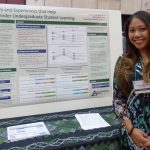
Institutions that understand what helps and hinders student learning will know how to improve student proficiency in core …

The Filipino program has engaged in assessment activities in the past but these efforts are limited and uncoordinated. …

To address the 2013 Interstate Teacher Assessment and Support Consortium (InTASC) Model Core Teaching Standards and Learning Progressions …
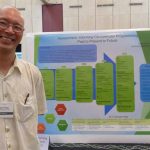
The Learning Assistance Center (LAC) offers academic support, e.g., tutoring and supplemental instruction (SI) study groups, for students …

This poster highlights the work of University of Hawaii at Manoa 2013 Information Literacy Working Group. Tasked by …
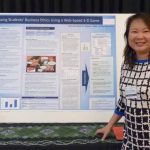
In Fall 2014 and Spring 2015, I surveyed the reactions of N = 58 undergraduate students in three …

Mānoa Works is designed to increase the college retention and success of need-based students through part-time work experience …

Five faculty in Department of Microbiology run five programs (BS/BA Microbiology; BS Molecular Cell Biology (MCB); MS/PhD Microbiology). …

The M.Ed. program in Special Education is an interdisciplinary program that includes core courses and electives. The core …

This poster exhibits the outcomes assessment practices of the BA in Second Language Studies program. While engaging in …
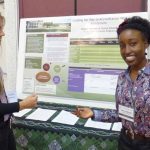
The Public Administration Program offers a Master’s of Public Administration (MPA) degree. Currently our program is 30 credits, …
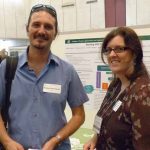
Two departments have begun the process of merging undergraduate programs to address a number of challenges faced by …
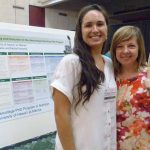
The Intercollege Nutrition PhD Program is a relatively new program, begun in Fall 2007. The Program has recently …

This poster describes the program’s project to develop doctoral level program learning outcomes mapped to required courses and …
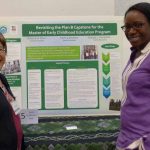
The Master of Early Childhood Education Program is a 2-1/2 year, 30 credit hybrid program is primarily delivered …
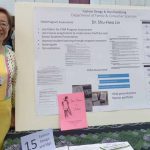
The mission of the instruction program in FDM is to provide students with appropriate knowledge and skills for …
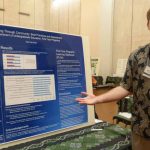
Access to College Excellence (ACE) at UHM provides a series of first year programs that serve approximately 25% …
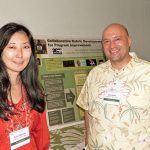
This poster is going to present how faculty in the Academy for Creative Media undergraduate program utilized an …
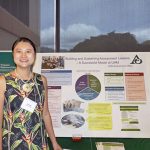
After analyzing the university’s needs and researching best professional development practices, the UHM Assessment Office initiated an exciting …
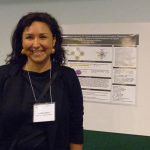
Providing standardized workshops for faculty interested in teaching in tech-rich can be challenging because faculty are at different …
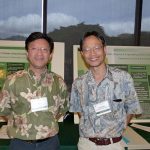
Oral proficiency in Mandarin is one of the core language skills targeted by the Chinese program learning outcomes. …
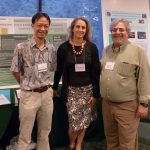
This poster will present how the Civil Engineering B.S. program utilized multiple sources of evidence to evaluate the …
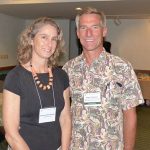
This poster will present the results of efforts to develop a robust program for assessment of the graduate …
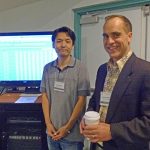
KAPA is FREE open-source software, developed by UHM College of Education. It requires a web application server and …
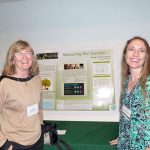
College of Education (COE) programs select six to eight key program assessments to systematically measure, collect and analyze …

The Communication Department’s mission is to meet the challenges and opportunities of communication in the emerging technological, multicultural, …
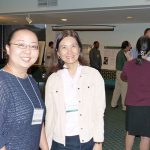
The Communication Department’s undergraduate curriculum is currently guided by seven SLOs (Student Learning Outcomes), which are demonstrable skills …
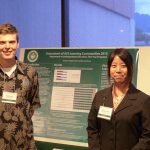
Access to College Excellence (ACE) at UHM provides a series of first year programs that serve approximately 25% …
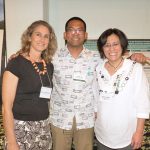
New LCME accreditation standards will require medical schools to monitor curriculum and content and to develop a curriculum …

Swine Production is a senior capstone course in which students integrate concepts learned in courses such as nutrition, …

As the only institution of its kind in the world, the UHM Korean Language Flagship Center (KLFC) undergraduate …

This study was intrigued by the needs to assess oral performance more systematically and to motivate students to …
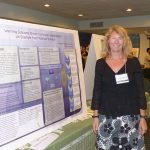
The Political Science faculty modified existing departmental, undergraduate student learning outcomes (SLOs), which informed assessment development and curricular …
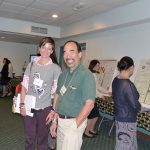
In the last 6 months, the Department of Psychology has initiated a new plan that is expected to …

SLS 150 (Learning Languages and Communicating in a Globalized World) is an introductory course mainly for first-year (freshman) …
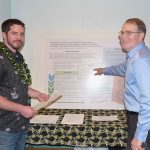
In Spring 2013, the Matsunaga Institute for Peace and Conflict Resolution (MIPCR) began a program review process by …

TIM school began to build the program assessment frame in 2009 and have developed the student learning outcome, …
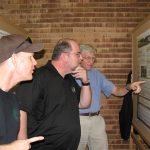
Anthropology is a four-field discipline that encompasses historical, humanistic, biological, linguistic, and psychological approaches to a holistic study …
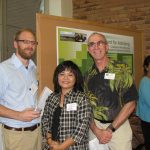
In the last few years, the need has increased at UHM for students to more actively engage in …
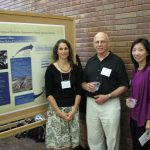
The Assessment Office supports programs as they engage in program-level assessment of student learning. Program assessment is undertaken …
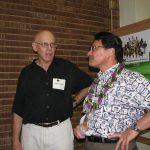
The student-athlete experience at the University of Hawai‘i is unique! One significant challenge for our student-athletes is traveling …

The B.S. degree in Marine Biology from the University of Hawaii at Manoa College of Natural Sciences is …
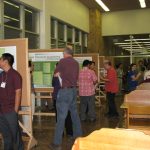
The Department of Botany faculty members have completed the initial steps of developing a program assessment plan for …

The poster describes the Department of Civil and Environmental Engineering’s process of assessing program outcomes. The steps in …

The learning objectives of the undergraduate program in economics include economic literacy, critical thinking, quantitative reasoning, and ability …
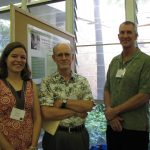
From fall 2007 to spring 2009, the UH Writing Mentors Program has reached approximately 1,300 students across 70 …
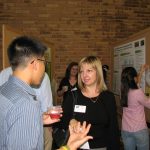
In Spring 2008, the English Department began assessment of student writing for the University’s Foundations Requirement in Written …
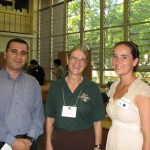
A successful Animal Science program produces graduates that are well-prepared to assume professional roles in the work force …

The LIS Program believes that assessment is the key to improving student learning and refining our teaching. The …

The poster gives the Assessment Tools that we use in our department to assess our department Program Objectives …
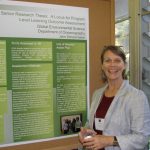
The Global Environmental Science (GES) program offers a B.S. degree through the Department of Oceanography in the School …
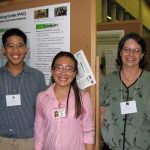
Students who utilize PAC’s services learn their roles and responsibilities in the advising relationship; create a comprehensive plan …
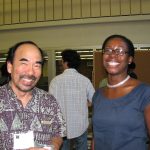
The Department of Psychology has adopted the learning goals and outcomes proposed by the American Psychological Association Task …
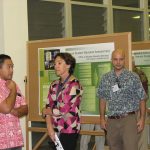
Each year, the Office of Student Housing Services conducts an assessment to measure our resident’s perspective of various …
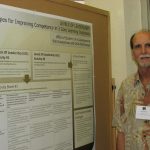
Two years ago, the staff of the Office of Student Life and Development (SLD) began the process of …
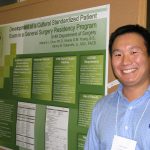
Due to the growing diversity of the United States population, various legal mandates and accrediting bodies require doctors …
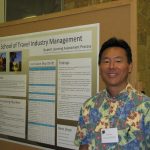
In February 2009, the TIM School, through its Faculty Senate, began a process of program assessment with the …
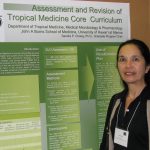
The Tropical Medicine Curriculum Committee reviewed the organization and content of the Tropical Medicine MS and PhD core …
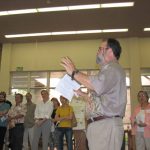
The Philosophy undergraduate program has a relatively small number of student learning outcomes and most of these refer …
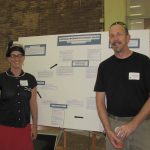
LILO (Learning Information Literacy Online) is a project of the UH Libraries Information Literacy Committee (UHLILC) for the …

Empirical data in relation to students’ satisfaction with tutoring sessions were gathered with an open-ended survey from one …
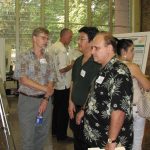
The poster describes the Department of Civil and Environmental Engineering’s process of assessing program outcomes. The steps in …
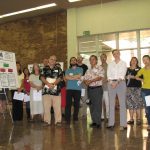
Several studies have revealed that successful mentoring affects college student retention. Also, research on attrition shows that the …
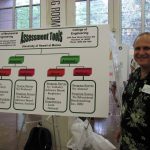
The poster gives the Assessment Tools that we use in our department to assess our department Program Objectives and …
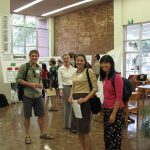
In the Spring of 2008, all students in Foundations in Writing (FW) courses were asked to select and …

Palliative medicine is a highly complex field aimed to prevent and relieve suffering, and improve the quality of …
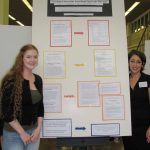
The task of creating an assessment plan in a fine arts department that focuses largely on studio work …
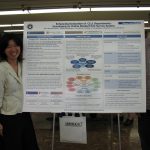
The College of LLL (CLLL) formed an Evaluation Resource Team (LLL-ERT) to (a) create evaluation capacity and a …
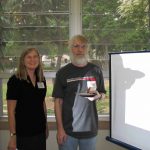
This poster reviews Mathematics’ assessment activities. It describes the program goals, assessment plan, and current activities; presents a …
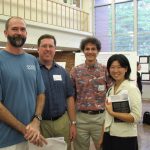
This poster presents an in-process plan for assessing student learning outcomes (SLOs) in ELI 83, the English Language …
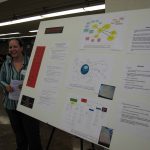
Active and interested faculty members met in a half a day workshop to develop a “curriculum concept map” …

First-Year Programs (FYP) utilizes multiple approaches to assess student learning outcomes and program success. Institutional data are used …
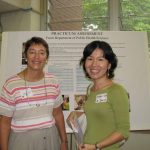
Practicum assessment utilizes an approach that helps ensure the masters of public health (MPH) students learn to take …
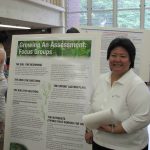
Outreach College serves as an advocate for the needs of the nontraditional, adult and distance learning students, i.e., …
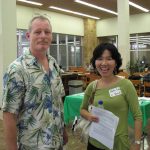
Over the past several years the Department of Speech has collected data from Speech majors prior to their …
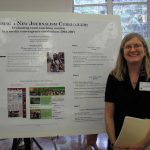
This study evaluates team teaching models of a new curriculum adopted by the University of Hawai`i’s journalism program …
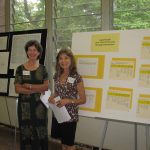
The logic model is a tool to assist faculty and program heads map their planning and assessment activities. …
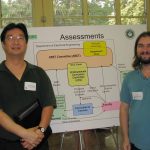
The Department of Electrical Engineering has put in place an assessment process that (1) has educational objectives and …
On April 5, 2019, the Campus Center Executive Dining Room was abuzz with excitement when the Assessment and …
This poster presents the process and results of an institutional assessment project that investigated advanced degree program learning …
The Food Science and Human Nutrition (FSHN) Undergraduate program has established an ad-hoc committee to assess written communication …
During the 2020-2021 academic year, the English, Hawaiian and Foreign Languages, Speech and Communication disciplines in the Language …
The objective of this study was to develop online case-based anatomy learning modules and assess student perceptions of …
Many students find sequenced courses to be challenging due to prerequisite knowledge being the starting point in each …
This project establishes a programmatic assessment plan for the Bachelors of Science program in Molecular and Cell Biology …
Quantitative assessments in noncredit education typically evaluate participant’s satisfaction or experiences with courses and the instructor. Learning outcomes …
In early 2019, ACCJC reaffirmed Kapi‘olani Community College’s accreditation status, but mandated a follow-up report and provided an …
The faculty of Hawaiian Studies (HWST) developed a blended assessment plan for our undergraduate program over the past …
Student learning outcome (SLO) statements made by an educational program serve as targets for achievement and openly communicate …
Scholarship on language teacher education emphasizes teaching language skills. Yet preservice language teachers must learn more than grammar …
Chaminade University of Honolulu has restructured General Education in recent years. Various faculty committees have been spearheading a …
The annual University of Hawaiʻi (UH) Online 5-Week Professional Development (PD) Program was created in 2018 in alignment …
This project presents a signature assignment for Indo-Pacific culture courses to assess the students’ cultural competency by discussing …
The Department of History has been engaged in assessment work of our undergraduate major, identifying how we can …
This poster will illustrate the activities and processes of the faculty in the Special Education MEd program at …
Exploring curriculum assessment is an exciting but daunting activity, especially when you first dive in. Faculty are currently …
Impactful assessment must be responsive to its broader institutional context as well as immediate situational demands. At UCSC, …
Undergraduate students are required to meet all ten competencies in their field education experience, demonstrating competency attainment by …
All Fashion Design & Merchandising courses were evaluated and analyzed by rubric for FDM program evaluation and assessment. …
The current climate of equity and inclusion is shining light on the previously ignored issue of honoring and …
This is an ongoing study on Integrated Performance Assessment (IPA) implementation in postsecondary novice-level Mandarin Chinese classes. The …
The Atmospheric Science BS program has strict requirements to meet the National Weather Service requirements for employment with …
The Liaison Committee on Medical Education requires that a variety of measures including direct observation be used for …
This project focuses on improving graduate program assessment at a primarily undergraduate-serving liberal arts college. The university has …
The Accreditation Council for Graduate Medical Education (ACGME) requires that residency programs assess performance in order to guide …
Academic Assessment is required for institutional accreditation, yet may be challenging for individual departments, programs, and faculty to …
The College of Social Sciences offers 11 bachelor degrees and a wide range of undergraduate course offerings that …
Our institution is developing processes to assess our general core education. After redeveloping our seven learning objectives, direct …
The Mānoa Advising Center (MAC) began teaching their first major exploration course, UNIV 340, in Spring 2014. Since …
We will describe a two-year assessment and curriculum project within the elementary education department at the University of …
This poster describes the processes of engaging stakeholders (Student Affairs, Campus Life, Career Services, and Advising), students and …
The Hawaii Positive Engagement Project (H-PEP): SPARK Aloha, funded by the USDOE Native Hawaiian Education Program, is dedicated …
For a Department serving approximately 120 graduate and 40 undergraduate students, our curriculum had remained stable for the …
Driven by the impact of COVID-19 pandemic on the global travel industry and the emergence of new job …
“Data-driven curriculum development entails gathering and evaluating both qualitative and quantitative data to recognize student requirements, capabilities, and …
A 2023-2029 imperative goal of the University of Hawai‘i is to fulfill kuleana to Native Hawaiians and Hawaiʻi …
The Diversification requirement is intended to assure that every student has a broad exposure to different domains of …
“The ability of students to identify, interpret, and evaluate primary sources and other historical texts is crucial to …
This poster will describe a systematic approach to increase knowledge and build capacity among college-level assessment leaders for …
This assessment project describes how the Mathematics, Natural and Health Sciences Division faculty at the University of Hawai’i …
At UH West Oahu, there are five Institutional Learning Outcomes (ILOs) including (1) Effective Communication; (2) Cultural Awareness; …
“To become a Native Hawaiian Place of Learning (UHM Strategic Plan, 2022) is to move toward Decolonial Indigenization …
This poster is about an effort to make better Journalism through better curriculum assessment as well as through …
Since 2020 the University of Hawaii, Manoa School of Life Sciences has developed curriculum and assessment for all …
“In 2021, the American Association of Colleges of Nursing (AACN) published the Essentials: Core Competencies for Professional Nursing …
The purpose of this project was to establish a systematic process to gather program learning outcome data. This …
From Monday April 1st to Friday April 5th, 2024, the Assessment and Curriculum Support Center hosted 10th Assessment …